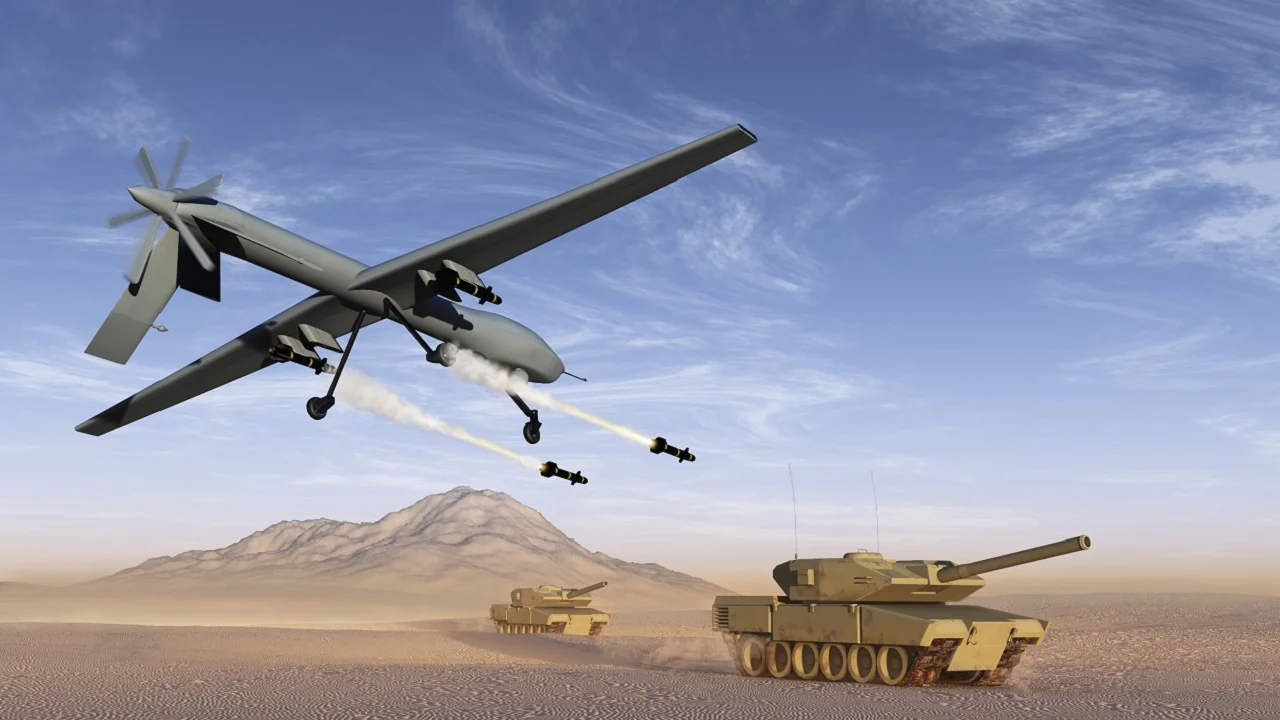Brussels (Brussels Morning Newspaper) – Power is essential for every electronic gadget. Today, we’ll explore what each drone power source entails and provide concrete instances of how they’ve been utilised to run actual drones. We’ll also get a quick review of the gear and fuel options used to power drones. Drones of all kinds—aquatic, terrestrial, and aerial—will be covered here. We’ve broken it down into multiple pieces to provide a comprehensive solution.
Are military drones electric?
Unmanned aerial vehicles, sometimes known as UAVs, are generally used in military operations in situations where the employment of human aircraft would be either too dangerous or too impossible. They are typically powered by batteries that may last for up to 30 minutes before they need to be recharged, and they transmit images that is captured in real time of the actions taking place on the ground.
In the heat of battle, military leaders use various strategies and tactics to inflict as much damage as possible on the adversary while sacrificing as few troops and resources as possible. This idea served as the foundation for designing the RQ-1 and the MQ-1 Predator, both unmanned aerial vehicles.
These high-tech aircraft, commanded by a crew kilometres away from the perils of war, can perform reconnaissance, combat, and support tasks even in the most intense conflicts. Even in the worst-case situation, if a Predator is lost in combat, military personnel may simply “snap another one out of the box” and get it up in the air quickly. There will be no deaths or detainees, as often when an aircraft goes down.
Batteries are the power source for all types of drones, including those that fly in the air, operate on the ground, or function underwater. Every battery has chemical energy, which it can transform into electrical energy via a series of chemical processes. Batteries are used in everything from cell phones to laptops. The transfer of electrons from a positively charged electrode (cathode) to a negatively charged electrode (anode) is required for certain chemical reactions to take place (cathode). This process results in the generation of electrical energy. The electrolyte makes it possible for the electrode to maintain a stable neutral charge, which is necessary to operate the whole system.
What fuel do military drones use?
Drones fuel cells are electrochemical devices that transform the chemical energy derived from fuels and oxidisers into usable electrical energy without the need for combustion. This kind of energy may be utilized to power electronics and vehicles. The cell does not need charging, but it does require a consistent supply of fuel and oxidiser to function properly.
The most frequent fuel is hydrogen, while the most common type of oxidiser is oxygen derived from the atmosphere.
There are a few different technologies for fuel cells, the most common of which are proton-exchange membrane (PEM), solid acid, and solid oxide. Because it has the maximum power density, the PEM electrochemical cell is the most utilised in drones. PEM cells also operate at lower temperatures, making their construction and engineering simpler and less expensive. Additionally, this allows them to have a smaller thermal signature.
UAVs Powered by PEM Hydrogen Fuel Cells
Positive and negative electrodes are connected by a solid polymer membrane in PEM fuel cells.
At the negative terminal, hydrogen atoms lose their electrons, transforming them into protons. The protons can pass through the membrane and arrive at the positive electrode. The cell produces electrical energy as electrons pass from the negative to the positive terminal.
Do military drones use fuel?
Yes, some military drones do need fuel to be powered. The most frequent fuel is hydrogen, while the most common type of oxidiser is oxygen derived from the atmosphere. There are a few different technologies for fuel cells, the most common of which are proton-exchange membrane (PEM), solid acid, and solid oxide. Because it has the maximum power density, the PEM electrochemical cell is the most utilised in drones.
The unmanned aerial vehicle (UAV) Predator employs standard, everyday mechanical technologies. The power for the ship’s electronics comes from a starter/alternator that has a capacity of 3 kilowatts, with additional power coming from auxiliary batteries. The rubberised fuel bladders inside the front and aft fuel tanks are easily refillable via the gas caps placed at the top of the fuselage.
They are typically powered by batteries that may last for up to 30 minutes before they need to be recharged, and they transmit images that are captured in real-time of the actions taking place on the ground. The amount of time a UAV can stay in the air due to hydrogen fuel cells may be increased to around 8 hours, and once it lands, it can be refuelled in less than 15 minutes.
Read More: Elon Musk to appear before the European Parliament over Twitter’s takeover
Conclusion
There are several different technologies that may be used to power drones, each of which has advantages and disadvantages of its own. Both the overall efficiency of a drone and the uses envisioned for the drone will play a role in determining the kind of energy source that the drone will use.



